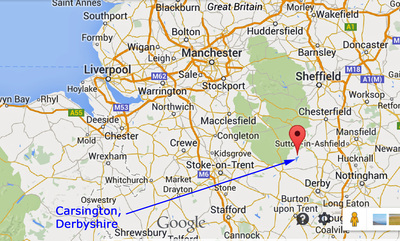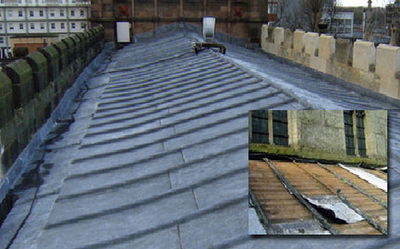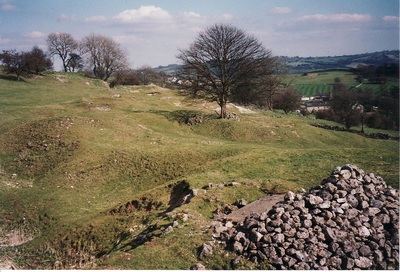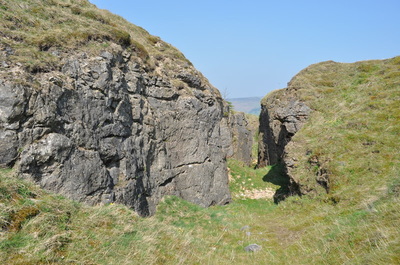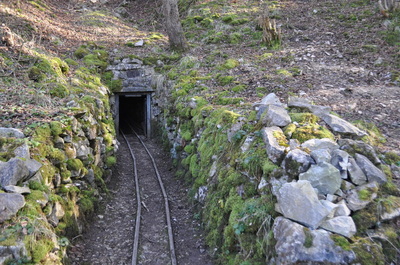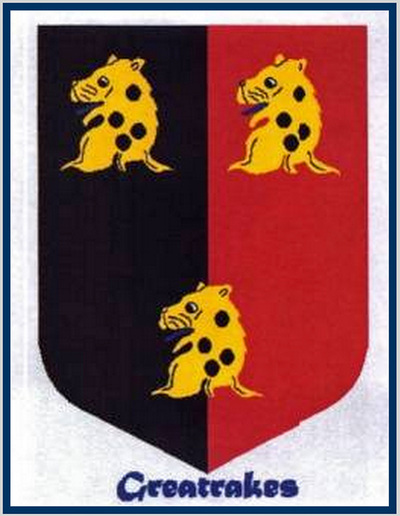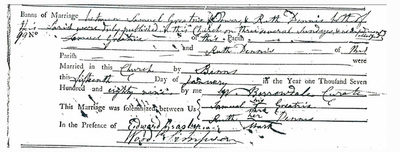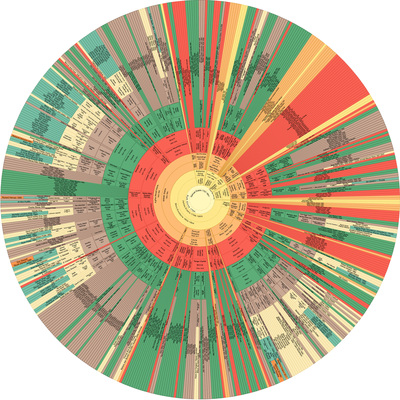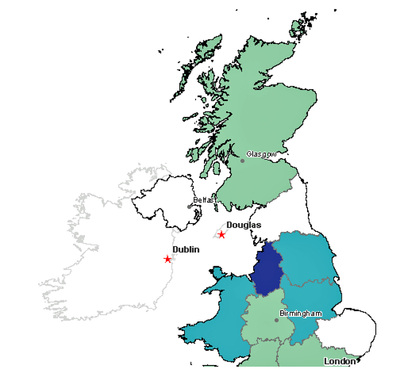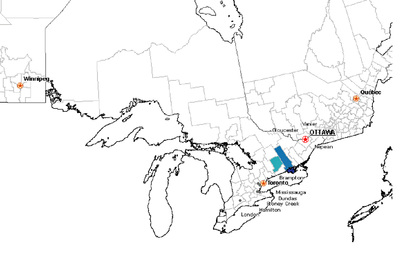Author: Keith Millard, in collaboration with Shana Greatrix
What does lead have to do with it?
Lead has been mined in the limestone areas of the Peak District near Carsington, Derbyshire since at least Roman times and continued until the last mine, Magpie mine, shut down in the 1950s. It was easily mined and malleable for making lead pipes for carrying water, etc. In fact, the Latin word for lead was "plumbum", the root for our English word "plumbing". The lead ore formations mostly took the form of 'rakes', a vertical vein often several feet or yards across which ran across the countryside, often for miles.
The Peak District is in the English midland region and from a place formerly known as "Great Rakes". The meaning of the name is very rare, it is, in fact, a lead mining term and translates as "The Great Vein of Ore". There were a number of former mines in the Derbyshire Peak District which at one time or another carried this name, although all are now long gone.
By the Middle Ages in England, lead was widely used to make water pipes and water containers, to form sheets or plates as a covering for roofs, and it was also popular as an instrument of torture in its molten form.
Click on photos to enlarge, cursor over to see caption.
What does lead have to do with it?
Lead has been mined in the limestone areas of the Peak District near Carsington, Derbyshire since at least Roman times and continued until the last mine, Magpie mine, shut down in the 1950s. It was easily mined and malleable for making lead pipes for carrying water, etc. In fact, the Latin word for lead was "plumbum", the root for our English word "plumbing". The lead ore formations mostly took the form of 'rakes', a vertical vein often several feet or yards across which ran across the countryside, often for miles.
The Peak District is in the English midland region and from a place formerly known as "Great Rakes". The meaning of the name is very rare, it is, in fact, a lead mining term and translates as "The Great Vein of Ore". There were a number of former mines in the Derbyshire Peak District which at one time or another carried this name, although all are now long gone.
By the Middle Ages in England, lead was widely used to make water pipes and water containers, to form sheets or plates as a covering for roofs, and it was also popular as an instrument of torture in its molten form.
Click on photos to enlarge, cursor over to see caption.
How did people become named Gratrix/Greatrix?
In England there was no need for a surname before the 1300s, and a person would be known by their location or their profession. Thus we would see John the Baker, or Robert the Smith, or John of Highstead, or more to the point, we could have seen William of Great Rakes.
In the 14th Century, the Government of John of Gaunt, Duke of Lancaster, son of Edward III, uncle of Richard II, father of Henry IV, and the richest and most hated man in the kingdom, introduced a poll tax on every citizen, and a surname was required to identify each person. Thus, John the Baker became John Baker, and William of Great Rakes became William Greatrakes. Almost everyone was still illiterate, and name spellings were totally at the whim of the clerk or parish priest, either of whom were often only semi-literate themselves!
Most research sources agree that an example of this naming phenomena was at the Great Rakes lead mine at Carsington in Derbyshire, and this is believed to be the source of many surnames in the spelling of Greatrex, Greatrix, Gratrix or Greatorex. The first recorded spelling of the family name is shown to be that of Richard Greatrix, which was dated 5th July 1571, St. Dunstans in the East, London, during the reign of Queen Elizabeth I, and perhaps followed by the funeral of William Greatrakes in Ireland and which included his official Coat of Arms;
FAMILY - Greatorex
MOTTO - Vivat Greatrakes, semper virescat
Let Greatorex live and always flourish
BLAZONA - Leopard's Head Erased Or, Pelettée.
SOURCE - Fairbairn's Book of Crests, 1905 ed.
Throughout the centuries, surnames in every country have continued to "develop" often leading to astonishing variants of the original spelling.
We note that an alternative theory for the name has been advanced, that Getorix originates in Normandy, France as a name. There is a statue of Saint Getorix (Vercingetorix from Roman times who was known as the king of the Gauls). Some think there is a connection with the Norman invasion into England. The name was changed to Gayteric in England and names often changed from the -ix or -rix to -ick or -rick in England. The new DNA testing is proving the connection to a different kind of Celtic tribe in Great Britain that actually came from the mainland of Europe. "Normans" got the name from "Norsemen" or people from the north, but the DNA is showing they were the same family group as the Celts or Gauls in Europe.
Click on photos to enlarge, cursor over to see caption.
In England there was no need for a surname before the 1300s, and a person would be known by their location or their profession. Thus we would see John the Baker, or Robert the Smith, or John of Highstead, or more to the point, we could have seen William of Great Rakes.
In the 14th Century, the Government of John of Gaunt, Duke of Lancaster, son of Edward III, uncle of Richard II, father of Henry IV, and the richest and most hated man in the kingdom, introduced a poll tax on every citizen, and a surname was required to identify each person. Thus, John the Baker became John Baker, and William of Great Rakes became William Greatrakes. Almost everyone was still illiterate, and name spellings were totally at the whim of the clerk or parish priest, either of whom were often only semi-literate themselves!
Most research sources agree that an example of this naming phenomena was at the Great Rakes lead mine at Carsington in Derbyshire, and this is believed to be the source of many surnames in the spelling of Greatrex, Greatrix, Gratrix or Greatorex. The first recorded spelling of the family name is shown to be that of Richard Greatrix, which was dated 5th July 1571, St. Dunstans in the East, London, during the reign of Queen Elizabeth I, and perhaps followed by the funeral of William Greatrakes in Ireland and which included his official Coat of Arms;
FAMILY - Greatorex
MOTTO - Vivat Greatrakes, semper virescat
Let Greatorex live and always flourish
BLAZONA - Leopard's Head Erased Or, Pelettée.
SOURCE - Fairbairn's Book of Crests, 1905 ed.
Throughout the centuries, surnames in every country have continued to "develop" often leading to astonishing variants of the original spelling.
We note that an alternative theory for the name has been advanced, that Getorix originates in Normandy, France as a name. There is a statue of Saint Getorix (Vercingetorix from Roman times who was known as the king of the Gauls). Some think there is a connection with the Norman invasion into England. The name was changed to Gayteric in England and names often changed from the -ix or -rix to -ick or -rick in England. The new DNA testing is proving the connection to a different kind of Celtic tribe in Great Britain that actually came from the mainland of Europe. "Normans" got the name from "Norsemen" or people from the north, but the DNA is showing they were the same family group as the Celts or Gauls in Europe.
Click on photos to enlarge, cursor over to see caption.
Our Gratrix/Greatrix Genealogy Overview:
Although Gretorix genealogy goes back to the 1500s, our Geni family tree begins with William Gretorix born in Grantham, Lincolnshire, in 1729 and his son, Samuel Gratrix who was born in 1751. Samuel Gratrix married Ruth Dinnis in 1789, and it was two of their sons, James and John, who immigrated to Ontario, Canada.
In our Geni family tree we currently show 793 descendants for Samuel Gratrix.
World Names FPM (Family names Per Million) for both Gratrix and for Greatrix show about 4.6 persons with those names in the United Kingdom. The Gratrix name is most predominate in the family's origins of Derbyshire.
The Greatrix name is much more predominate in Ontario, and clustered in Prince Edward, Hastings, and Peterborough Counties, and with a FPM of 31 persons per million population. The Gratrix name is more predominate in the US than in Canada, and particularly in the states of Washington and Alaska.
Click on photos to enlarge, cursor over to see caption. Click on pdf file to see the Descendants Fan Chart in the browser window, Ctrl and + to increase the size to be able to read it all..
Although Gretorix genealogy goes back to the 1500s, our Geni family tree begins with William Gretorix born in Grantham, Lincolnshire, in 1729 and his son, Samuel Gratrix who was born in 1751. Samuel Gratrix married Ruth Dinnis in 1789, and it was two of their sons, James and John, who immigrated to Ontario, Canada.
In our Geni family tree we currently show 793 descendants for Samuel Gratrix.
World Names FPM (Family names Per Million) for both Gratrix and for Greatrix show about 4.6 persons with those names in the United Kingdom. The Gratrix name is most predominate in the family's origins of Derbyshire.
The Greatrix name is much more predominate in Ontario, and clustered in Prince Edward, Hastings, and Peterborough Counties, and with a FPM of 31 persons per million population. The Gratrix name is more predominate in the US than in Canada, and particularly in the states of Washington and Alaska.
Click on photos to enlarge, cursor over to see caption. Click on pdf file to see the Descendants Fan Chart in the browser window, Ctrl and + to increase the size to be able to read it all..
| 1751_-_samuel_gratrix_-_9_generations_descendants_fan_chart.pdf |
